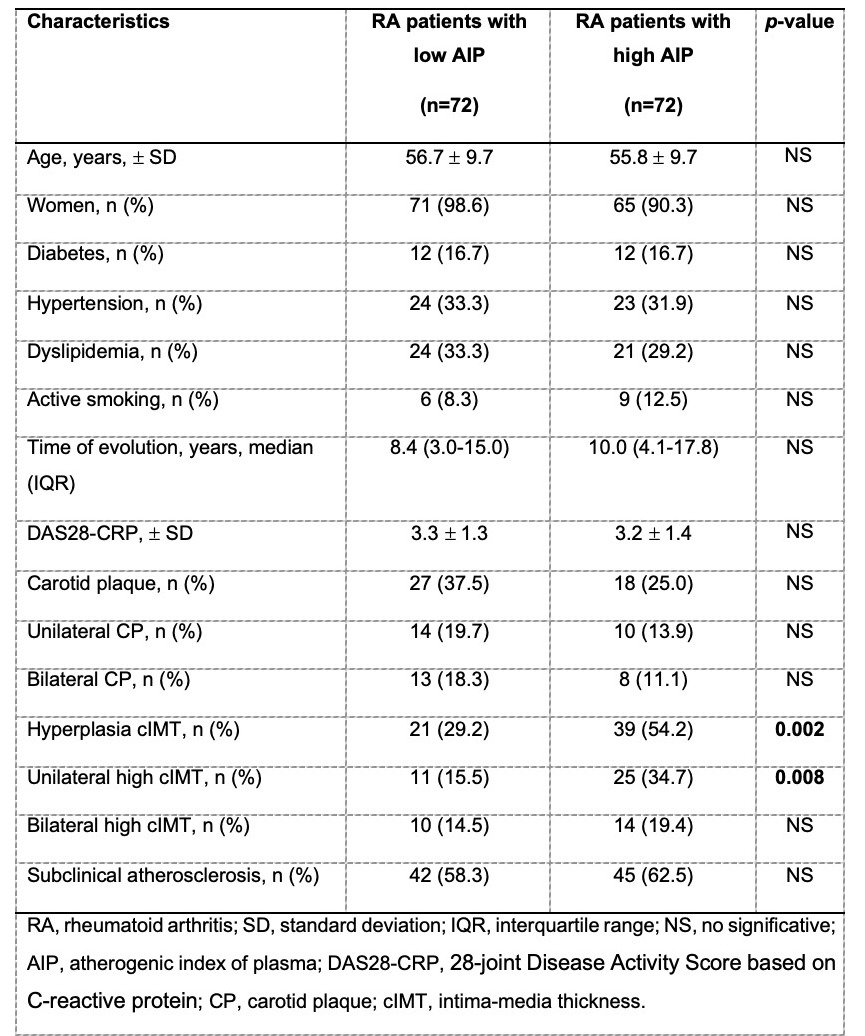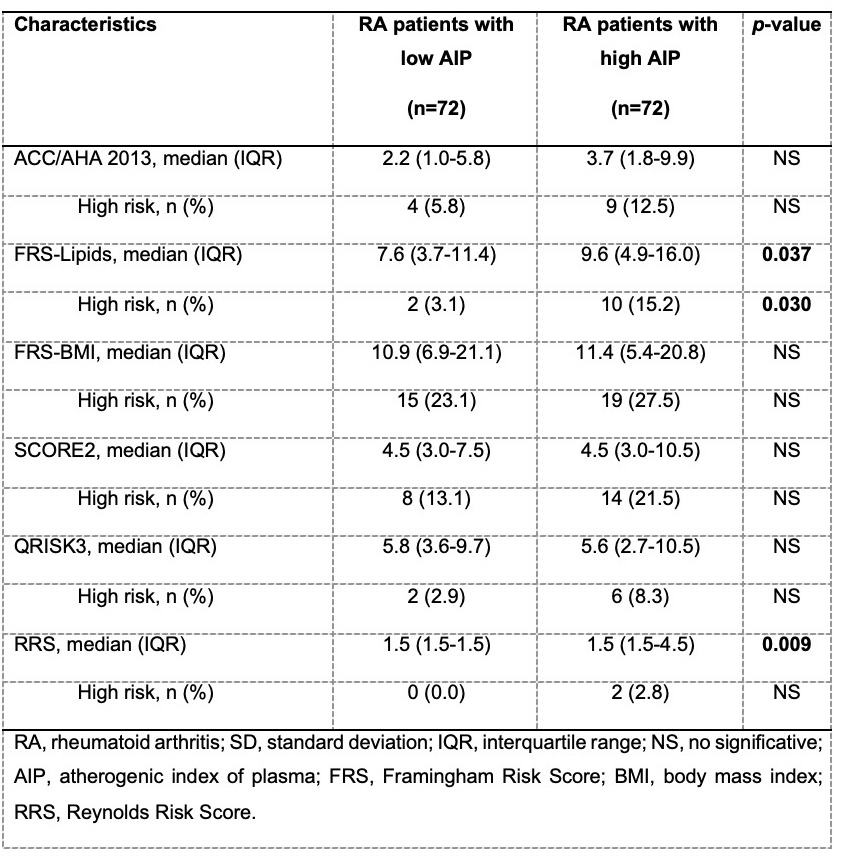Session Information
Date: Monday, November 13, 2023
Title: (1264–1307) RA – Diagnosis, Manifestations, and Outcomes Poster II
Session Type: Poster Session B
Session Time: 9:00AM-11:00AM
Background/Purpose: The atherogenic index of plasma (AIP) is a novel marker to identify cardiovascular disease. Recently, AIP was reported to be related to long-term cardiovascular disease risk in women with systemic lupus erythematosus (SLE) and rheumatoid arthritis (RA). We aimed to evaluate if RA-patients with high AIP present a higher prevalence of carotid plaque than patients with RA and low AIP.
Methods: A cross-sectional and comparative study including RA-patients aged 40 to 75 who fulfilled the ACR/EULAR 2010 classification criteria for RA. Patients with previous cardiovascular disease were excluded. Carotid ultrasound was performed on all study participants. The presence of carotid plaque (CP) was defined as diffuse carotid intima-media thickness (cIMT) ≥1.2 mm or focal thickness ≥0.5 mm. Subclinical atherosclerosis was defined as the presence of CP or an increased cIMT (≥0.8mm). Cardiovascular disease risk was evaluated using 6 algorithms: ACC/AHA 2013, FRS-Lipids, FRS-BMI, RRS, QRISK3, and SCORE2. AIP was defined by log (TG/HDL-C) mg/dL, and levels ≥0.21 were considered as high AIP. Patients were divided into two groups according to AIP levels. The distribution between groups was assessed with the Kolmogorov-Smirnov test. Comparisons with Chi-square or Fisher’s exact test and Student’s t-test or Mann Whitney’s U-test, accordingly. A value of p≤0.05 was considered statistically significant.
Results: A total of 144 patients with RA were included, most of which were women (n=133, 94%). There was no difference between sex, traditional cardiovascular risk factors, disease activity, or disease duration between patients with high AIP and those RA-patients with low AIP (Table 1). The prevalence of CP (37.5% vs 25.0%, p=0.106) and overall subclinical atherosclerosis (58.3% vs 62.5%, p=0.609) was similar between groups (Table 1). However, the prevalence of increased cIMT was higher in RA-patients with high AIP (29.2% vs 54.2%, p=0.002). Cardiovascular risk was increased in patients with high AIP using FRS-Lipids Score (7.6 vs 9.6, p=0.037) and RRS (1.5 vs 1.5, p=0.009) (Table 2).
Conclusion: The prevalence of increased cIMT was higher in RA-patients and had a high atherogenic index of plasma (AIP). AIP could be a helpful marker for the early identification of patients with increased cIMT.
To cite this abstract in AMA style:
Galarza-Delgado D, Colunga I, Azpiri-López J, Gonzalez-Gonzalez V, Beltran V, Arias Peralta A, Cardenas-De la Garza J, Arvizu-Rivera R. Atherogenic Index of Plasma Identifies Patients with Rheumatoid Arthritis and Increased Carotid Intima-Media Thickness [abstract]. Arthritis Rheumatol. 2023; 75 (suppl 9). https://acrabstracts.org/abstract/atherogenic-index-of-plasma-identifies-patients-with-rheumatoid-arthritis-and-increased-carotid-intima-media-thickness/. Accessed .« Back to ACR Convergence 2023
ACR Meeting Abstracts - https://acrabstracts.org/abstract/atherogenic-index-of-plasma-identifies-patients-with-rheumatoid-arthritis-and-increased-carotid-intima-media-thickness/


